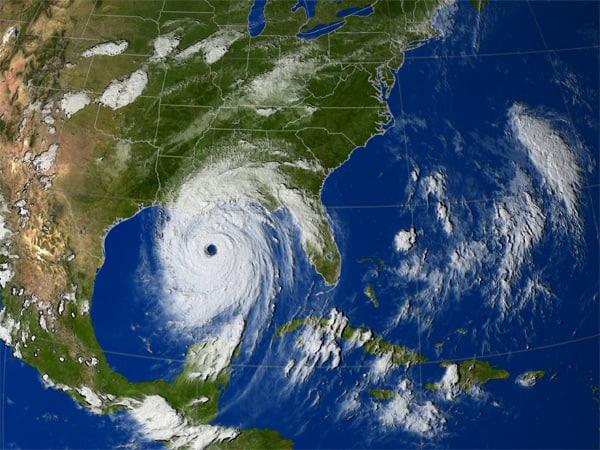We know climate change is affecting the Earth’s temperature. But it’s also affecting the intensity of hurricanes by making them stronger. They’re getting so strong, that scientists are now re-categorizing these storms as a warning to people in the future, when they may be so intense, they’ll be even more dangerous. Researchers may add a Category 6 to the Saffir-Simpson Hurrican Wind Scale, now only ranked up to a Category 5 (winds of 157 mph or higher). This growing concern about the intensification of hurricanes focuses mainly on their potential impact on human communities and ecosystems, for example, small island communities in Asia and the Caribbean. This concern is not unfounded, as mounting evidence suggests that hurricanes are becoming stronger.
Scientists are also looking at where hurricanes intensify. According to National Geographic and atmospheric scientist Ruby Leung, Hurricane Irma “rapidly intensified exactly at the time when it passed over this area with very fresh water at the surface of the ocean.” Also, “freshwater from the Amazon-Orinoco river system appears to increase the chances of rapid intensification in the eastern Caribbean and western tropical Atlantic.” Because a hurricane needs a perfect recipe to create an intense storm, scientists are looking at the bigger picture when it comes to stronger hurricanes.

Understanding Hurricane Dynamic
To fully understand what an intensifying hurricane means, it’s important to grasp the dynamics that form them. Typically, a hurricane will form over warm ocean water. Warm air rises, cools condenses, and releases heat that fuels the storm.
Factors that contribute to the growing strength of hurricanes include sea surface temperatures, wind shear, atmospheric moisture, and ocean heat content. Warm water also provides more energy for evaporation and processes that drive the storm’s circulation. This is an indirect result of rising global temperatures. Additionally, extended warm water periods allow hurricanes to maintain their strength over long distances. It’s difficult to accurately predict their intensity because several hurricanes have been known to quickly intensify as they approach land (EDF).
